Seed Dispersal
Allowing your native plants to “go to seed” will permit pollinators to sustain the circle of life.
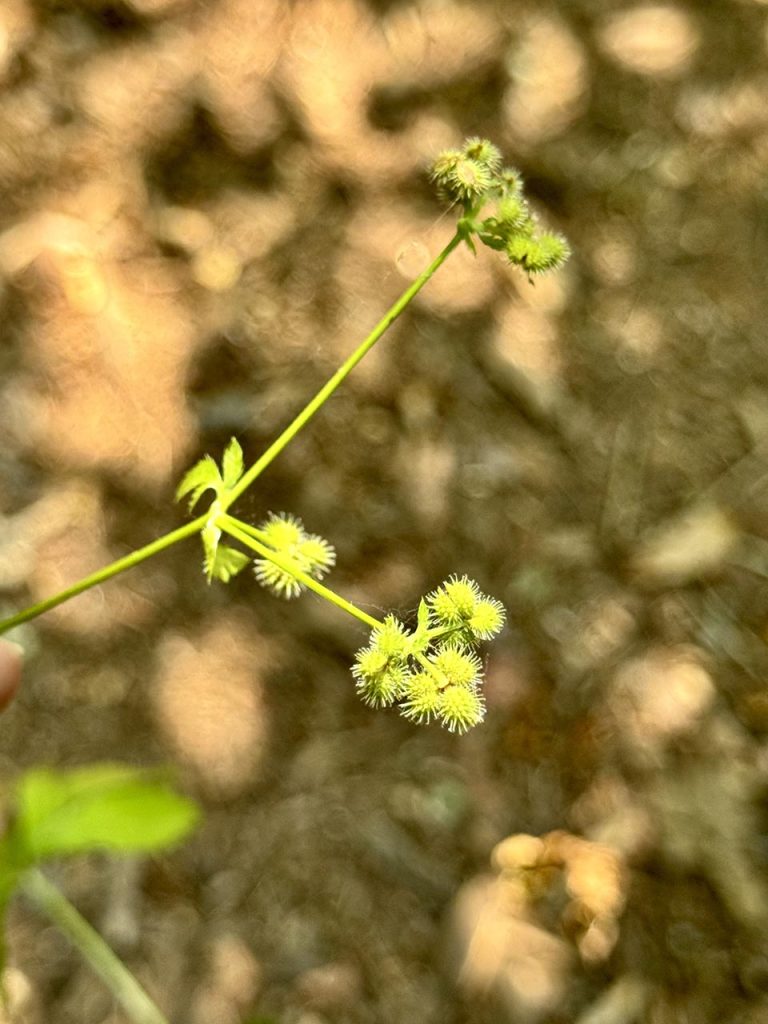
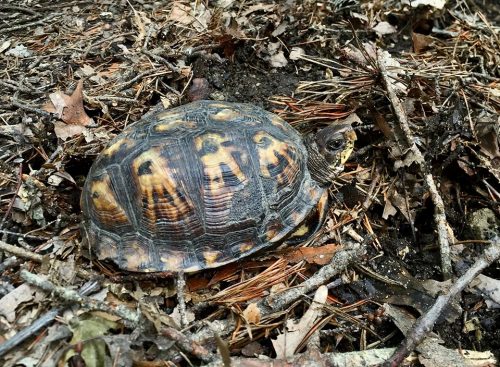
The flowers in our gardens are transforming into seed heads. Late summer and fall are the time for hitchhikers—the seeds that stick to you. Seeds travel in many ways.
The goldfinch and other seed-eating birds are having a field day among the unruly plants in our yard. They flush from the garden in a flurry of gold when we exit our house.
The goldfinch actually gets its colors from carotenoids found in seeds. The color pigmentation in flowers includes green from chlorophyll; yellow, orange, and red from carotenoids, and red, purple, and blue from anthocyanins. Each pigment plays a role in the plant’s life for photosynthesis or for attracting pollinators. And these pigments are often the source of birds’ plumage colors as well.
Not long ago I was lecturing in a garden about the pollination of plants by insects. I discovered that many of the young mothers in the crowd did not know that insects played a role, and some were not familiar with the idea of pollination at all. I suspect they knew about the birds and the bees but simply not how it took place among plants.
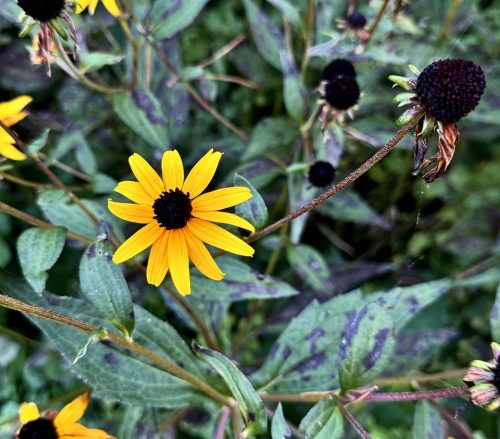
After further considering their naiveté, I realized that I hadn’t reviewed the process in many years myself. So since we’re going to talk about seeds, we should start with the basics of how a seed is formed.
Flowers are the botanical structures that enable plants to reproduce. In general, pollen must be moved from a male part of the flower to the female part in a process called pollination. Male gametes (pollen grains) are found in a plant’s anthers. The female gametes of the flower are found in the ovule.
Pollen is transported by insects, wind, water, birds, butterflies, bats, and other animals who visit flowers. Floral species may be reliant upon specific pollinators or a variety of them. When pollen is transmitted to the flower’s stigma it forms a pollen tube that extends down the stigma to the female portion of the flower called the ovule. When the tip of the pollen tube reaches a tiny opening in the ovule it dissolves, allowing the polynuclear cell to enter the ovule. The polynuclear cell fuses with the egg cell nucleus; this is “fertilization.” Thus a new cell is formed called a zygote.
The single zygote cell divides and develops to become a plant embryo. The embryo has a plumule and a radicle. The plumule becomes the shoot of the plant while the radicle will be the plant’s first root. The rest of the ovule develops into cotyledons or the food source for the embryo. This is the structure that makes a seed, which gets a protective barrier called a coat.
The take-away message is that a seed is the embryonic stage of a plant’s lifecycle. Seeds have three basic parts—embryo, endosperm. and seed coat. Once a seed sprouts and grows leaves, its food source will come from photosynthesis. Until then, the cotyledon will be its source of nutrition.
Seeds aren’t always transported; some simply drop to the ground and grow. But many are carried away and several even have structures that help them float on a breeze; who hasn’t blown on a dandelion’s seed head or tossed a maple seed in the air with its little helicopter wings?
However, many seeds get animal assistance to grow or to be dispersed. For instance, box turtles are considered the main distributor of mayapple seeds. They like the fruit and after eating it the seeds pass through their gut and are spread. Saurochory is the term for the reptile dispersal of seed from eating fruit. The shrub Annona glabra or “alligator apple’s” fruit (also called pond apple) is eaten by Florida alligators and thereby spread. Fish can also distribute seeds by eating fruit. Some fish in the Amazon River Basin note the audible explosions of Eperua rubiginosa seed pods and eat the seeds that fall into the river.
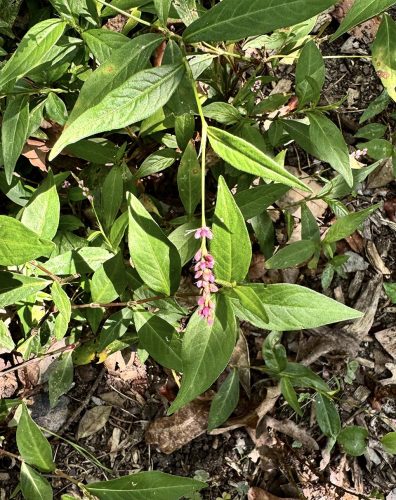
You may be asking yourself, “audible explosions?” Yes, if you have wisteria in your yard you may be familiar with the sound of a seedpod dehiscence. This type of dispersal is called ballochory, in which a seed is forcefully ejected. I once made the mistake of putting a wisteria pod in my pocket and forgetting about it. When it popped open I thought someone had shot me in the hip!
Snails disperse small seeds. Large bats, like Australia’s flying foxes, also disperse seed, which is called chiropterochory.
Raccoons eat the fruit of persimmons on fallen tree trunks. They digest the fleshy part of the fruit, but their droppings plant the seeds along the surface of the trunk. This is why you sometimes see a row of persimmon trees.
Many seeds cling to fur and the animals then distribute the seed. You have likely played this role yourself (see box above).
The best advice if you want to enjoy and support wildlife is to allow the native plants in your yard to continue their lifecycle and go to seed. Let the dead stalks stand and fall on their own throughout the winter. This will provide food and habitat for insects and animals. A few readers may say, “But I’m trying to get rid of insects!” Remember, though, that without insects there is no pollination, no topsoil, no butterflies, no food for birds, and no life. So leave the dead leaves and plant stalks to decay on their own schedule, and enjoy the bounty of nature.
Sources
- The Seed, Botanical Garden at Berkeley, Lewis Feldman, PhD.
- Dispersal by Animals, by Hans Lambers, Britannica.
- Native Plant Trust, Sanicula canadensis.
- Illinois Wildflowers.info, John Hilty.
- USDA Plant Guide.
* * *
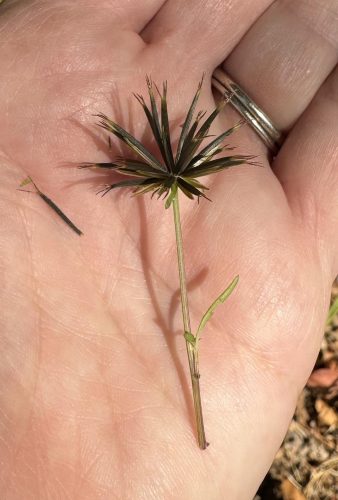 HITCHING A RIDE: Some of our common weedy plants, like Bidens bipinnata or Spanish needle/beggar ticks, stick to our clothing. The seed is long and ebony in coloration with two singular prongs that seem to hook to everything. And those little hooks, when they poke through your socks, can be amazingly scratchy.
HITCHING A RIDE: Some of our common weedy plants, like Bidens bipinnata or Spanish needle/beggar ticks, stick to our clothing. The seed is long and ebony in coloration with two singular prongs that seem to hook to everything. And those little hooks, when they poke through your socks, can be amazingly scratchy.
Listed as native in many sources and uncertain by others, these hitchhikers are generally considered an unwanted plant. Many suggested eradication methods are offered to those growing crops. Yet many pollinators use the plant, birds eat the seeds, and rabbits eat the foliage.









